How to grow sweet peas: expert advice for fabulous summer blooms
Our tips on how to grow sweet peas include everything you need to know on sowing, planting, and picking

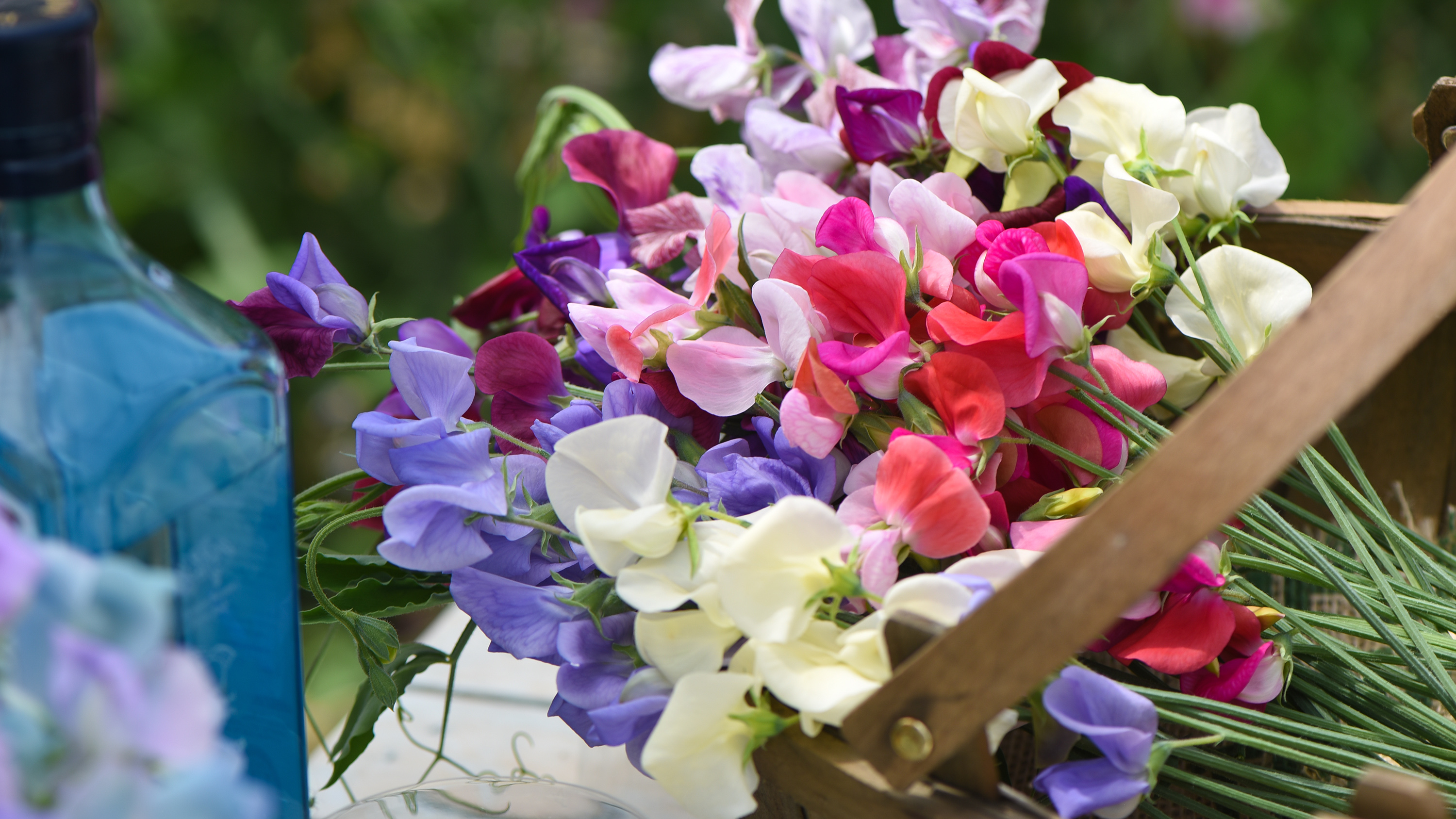
Learning how to grow sweet peas is really quite straightforward, but will reward you with some of the most exquisite blooms. With their beautiful variety of colors and incredible scent, it's no wonder they're a firm favorite summer flower amongst gardeners.
What's more, they're brilliant for cutting – simply arrange in a vintage jug or glass bottle to brighten your home. And the more you pick, the more they grow, so you can have show-stopping indoor displays all summer long, while still enjoying their brilliance in the garden.
We've pulled together all the advice you need to grow your own sweet peas this year, so you can add these beauties to your flower bed ideas.
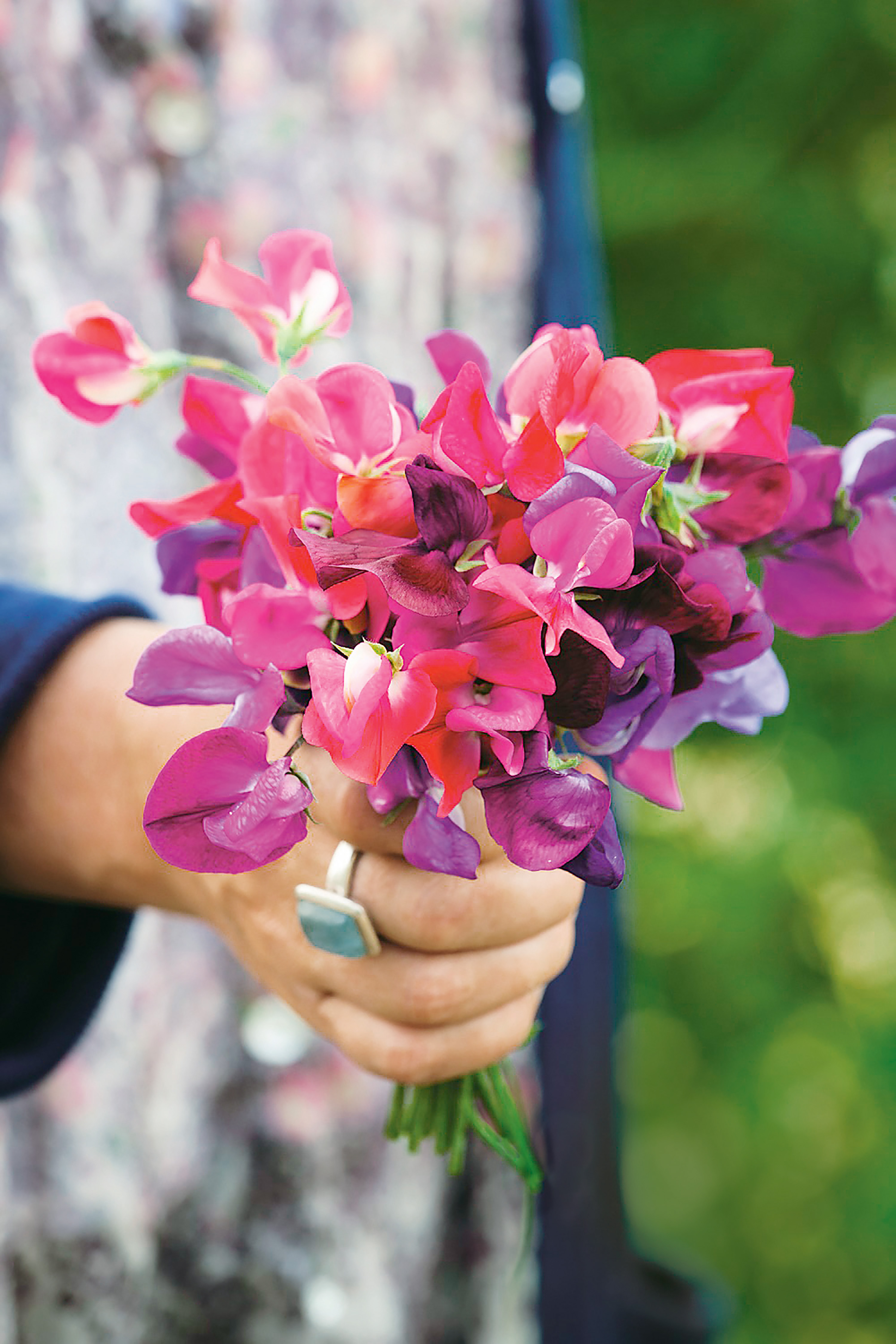
How to grow sweet peas in 5 simple steps
Whatever sweet pea varieties you plan to grow, these steps make it simple to enjoy their summertime show.
1. Prepare your seeds
When growing flowers from seed, sometimes a bit of prep can help get them off to a good start. The experts at Floret suggest soaking your sweet pea seeds in water for 24 hours before sowing. This softens the seed coat, which in turn, speeds up the sprouting process.
Alternatively, Sue Sanderson from Thompson & Morgan says you can leave the seeds on moist kitchen roll until they swell or sprout. Lay the kitchen roll in a sealed container and place it in a warm room, she adds.
You can also weaken the shell slightly using a nail file, although this is a little more time-consuming. If you don't have time to do any of the above, don't worry, your seeds should still germinate successfully, they just might take a little longer to do so.
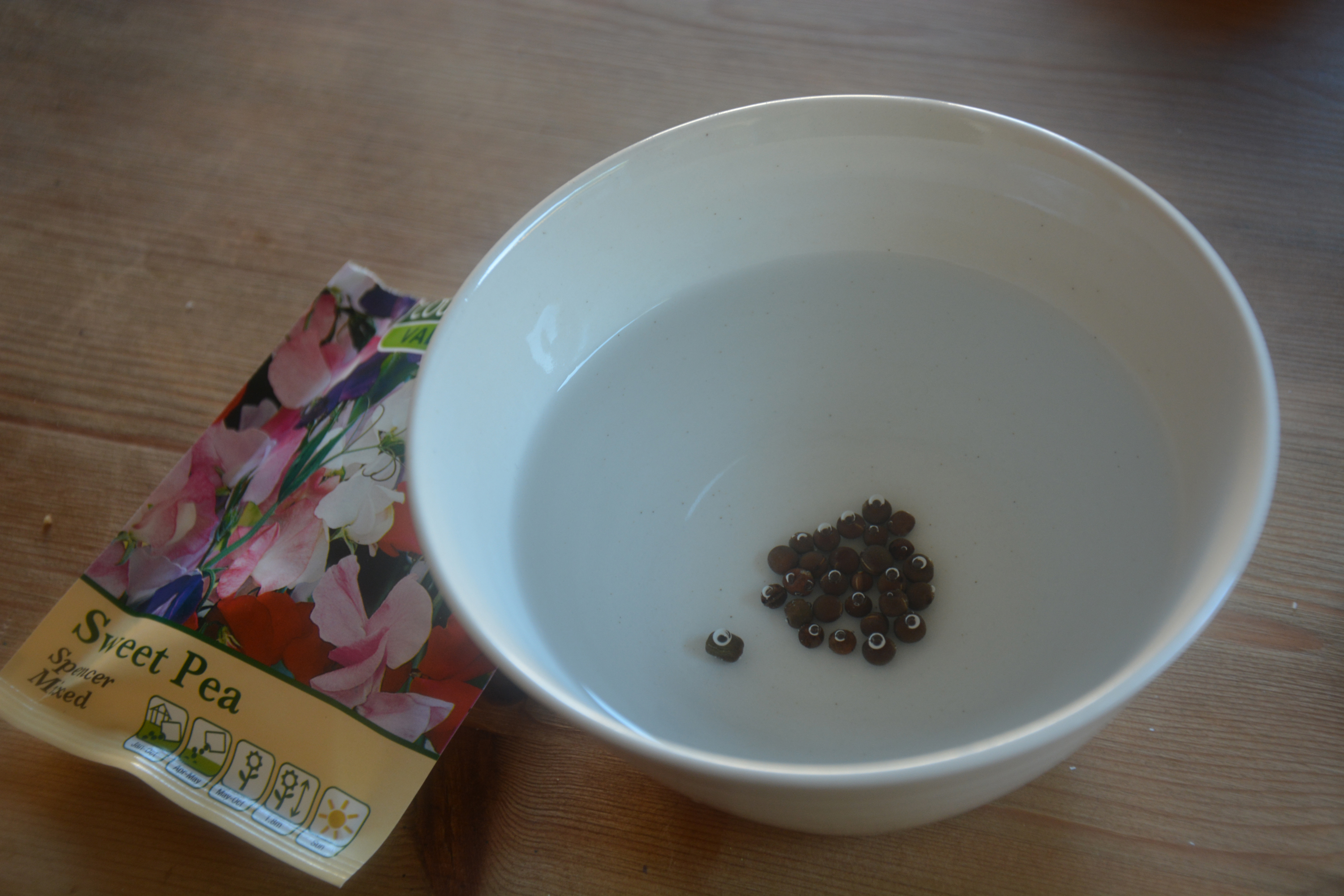
2. Sow the seeds into root trainers
Sweet peas have deep roots, so it's best to sow them in root trainers. These are deep modules that open out, so seedlings can be planted without their roots being disturbed. Fill them with a mixture of seed and multi-purpose compost, and, as Floret says, allocate two seeds per pot, using your finger to poke them a half-inch into the soil.
Alternatively, you can use cardboard tubes from toilet and kitchen rolls if you're after some budget garden ideas. These are perfect for sweet peas as they can be planted whole and will slowly decompose in the soil over time.
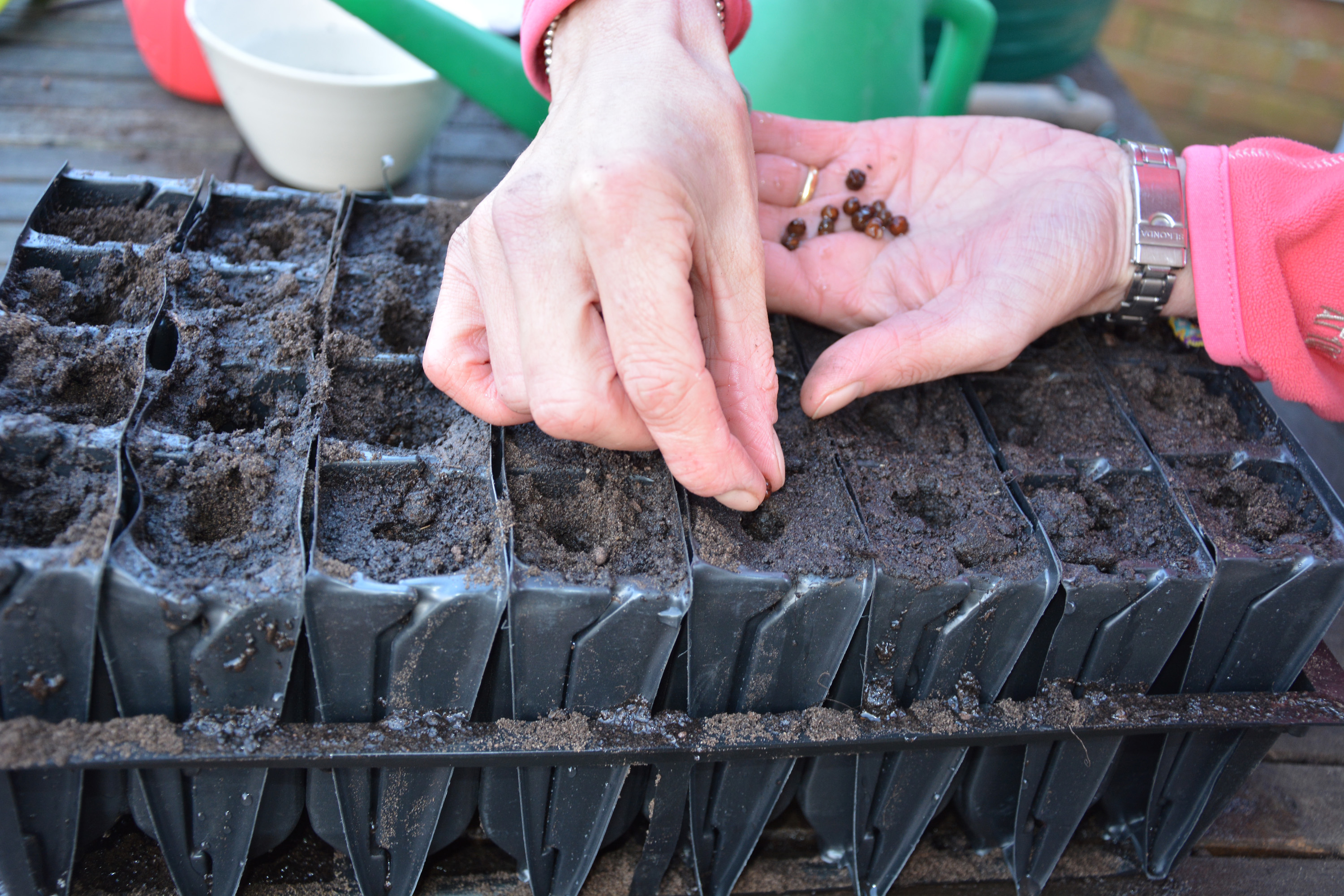
3. Cover the seeds to speed up germination
Covering pots with a plastic dome lid will increase humidity and speed up germination, says the team at Floret.
Place spring-sown sweet peas in a cool greenhouse, or in a bright window of your home until they're ready to be planted out. If sowing your sweet peas in autumn, ensure they're protected from cold weather by using a well-ventilated greenhouse or cold frame. They can be planted out the following year once the soil has warmed.
4. Pinch out the tips
Pinching out the tips of sweet pea seedlings as they grow encourages them to develop bushy side shoots that will produce more flowers.
The team at Floret says to do this when the plants are between 4–6 inches tall. Pinch just above a leaf joint, leaving two or three leaf nodes.
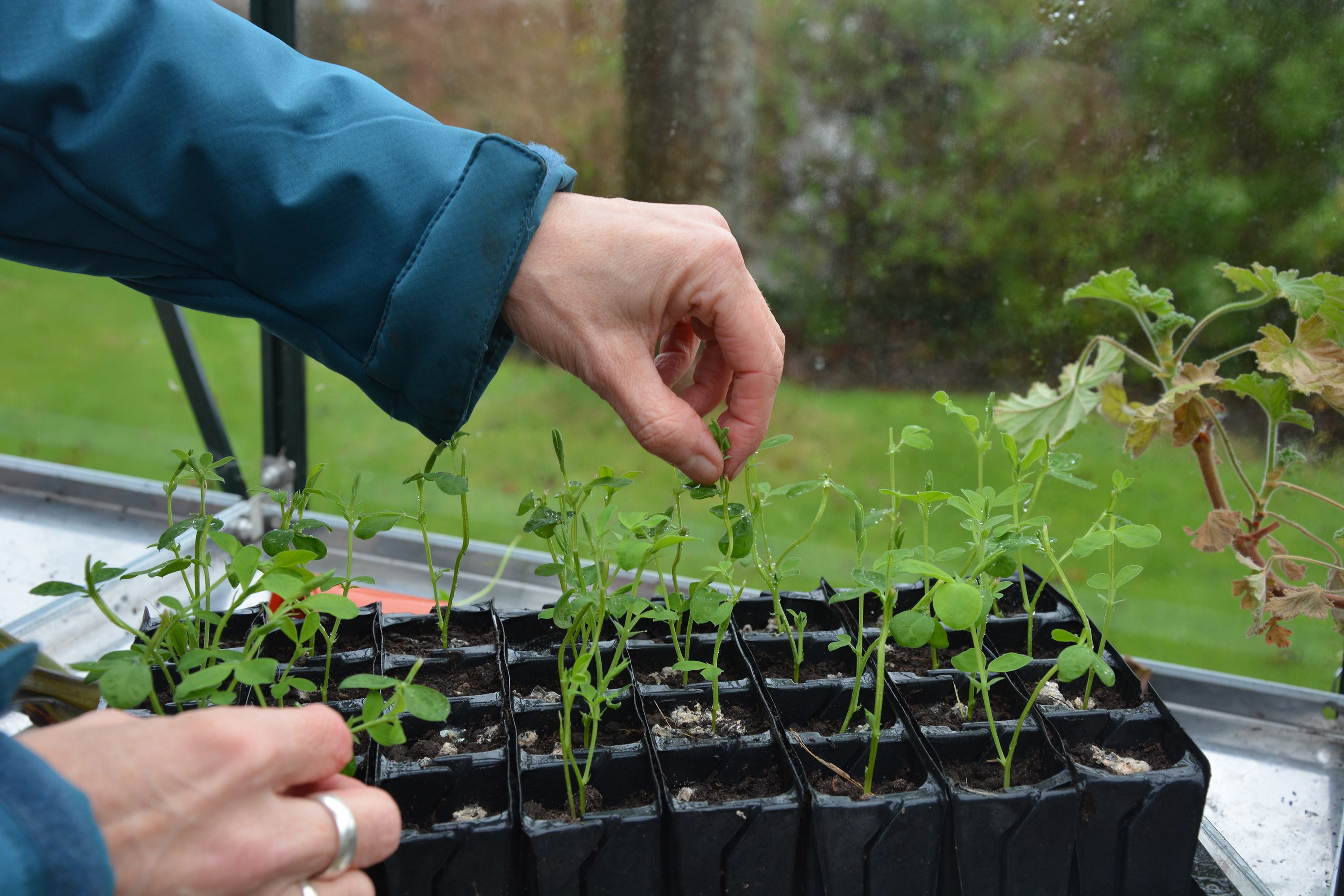
5. Plant out your seedlings
When your seedlings are looking sturdy and the ground is warm outdoors, it's time to get planting. Before you do so, remember that sweet peas are greedy plants and require lots of feeding to flourish. So, make sure you're planting them into well-prepared soil. A scattering of bone meal, a thick layer of compost or well-rotted manure, and a generous dose of natural fertilizer will do the trick, suggests the experts at Floret. Mix this deeply into the soil.
You'll also want to provide a structure for your sweet peas to climb up – such as an obelisk or trellis. These can make a pretty feature in themselves, and are perfect if you love our cottage garden ideas.
Once the structure is in position, plant the seedlings out in rows around the structure. Sue Sanderson for Thompson & Morgan advises placing two or three seedlings in each hole for a nice, full display, planting each group about 6in (15cm) apart.
Happy sweet peas will grow fast. Be sure to keep them in order by tying them to your structure as they grow, using pieces of string. Don't tie too tightly though, else you might damage the stems.
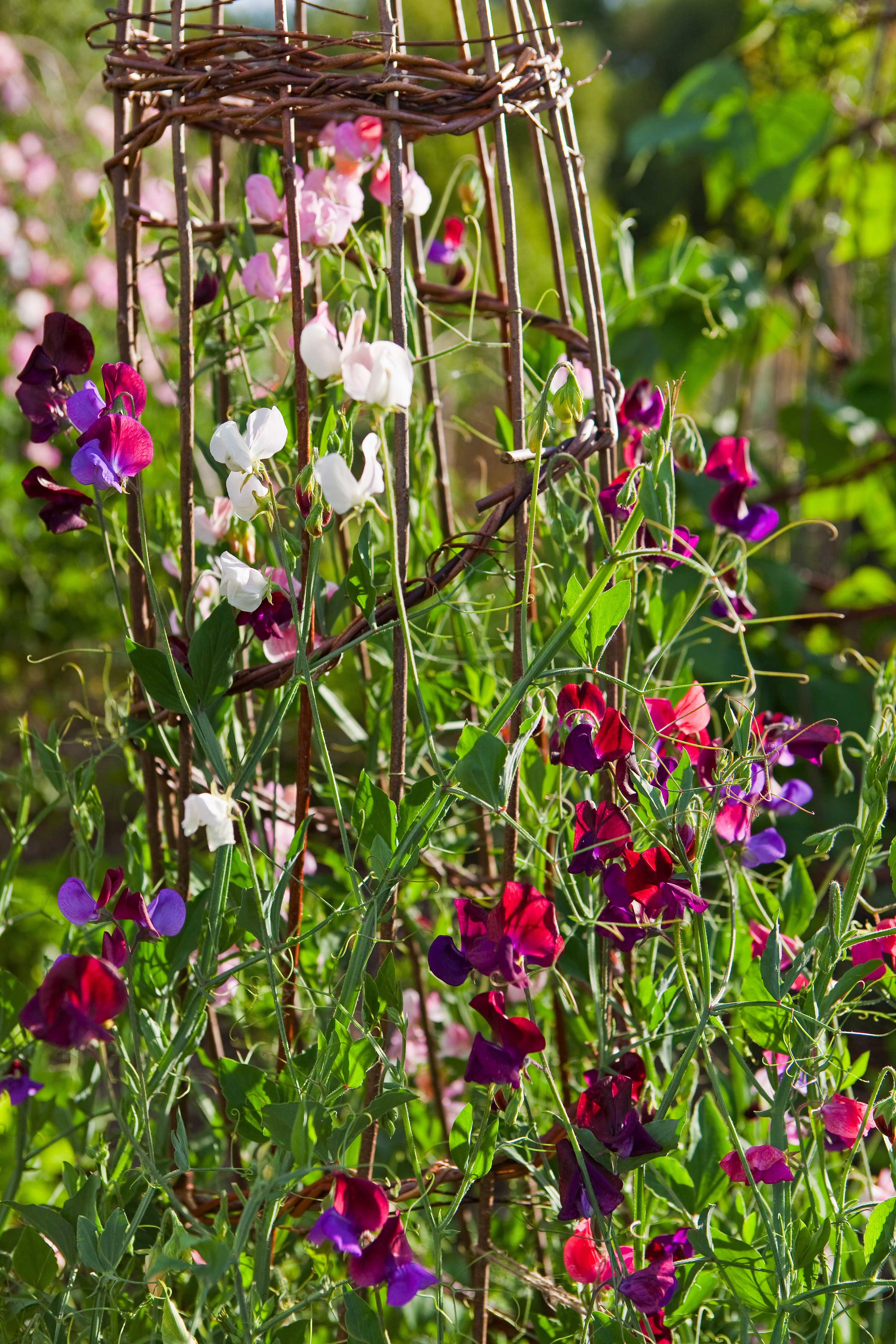
When is the best time to sow sweet peas?
You can sow sweet peas in early spring, either into root trainers or, if the soil is warm enough, straight into the ground.
As mentioned, you can also sow your sweet peas in autumn, and then overwinter them in a greenhouse or cold frame which will protect them from the colder weather. The resulting plants often have stronger roots than those sown in spring and will flower earlier, too.
However, for the best of both worlds and a succession of blooms that will last right through the warmer months, you can sow some in autumn and a later batch in spring.
Do sweet peas come back every year?
Sweet peas are annual plants, so will only survive one season. 'However, their cousin Lathyrus latifolius (the broad-leaved everlasting pea) is a perennial climber that provides color year after year,' says Hazel Sillver, garden expert for Amateur Gardening.
'Its bold magenta-pink blooms are produced throughout summer and into fall, but have no scent.'

What is the best climbing frame for sweet peas?
There are lots of different climbing plant support ideas that you can try when growing sweet peas.
The wigwam method is a classic approach and a lovely way to brighten up a raised garden bed. 'Create wigwams of hazel sticks (which have better grip for the plants than bamboo canes) in an open, sunny position,' says Hazel.
However, 'a column-shaped support will produce more flowers than the classic wigwam-shaped frame,' she says.
Constructing this type of support is simpler than you might expect. 'Insert bamboo canes or long hazel sticks (about 4ft/1.2m high) into the ground in a 2ft (60cm) wide circle. If using twiggy hazel, you may not need netting; otherwise, weave your canes through netting. Ensure the holes of the netting are wide enough to let sufficient light through; natural jute netting is more attractive and eco-friendly than plastic. These columns can be planted in sunny borders, but ensure they have airflow around them to prevent mildew.'
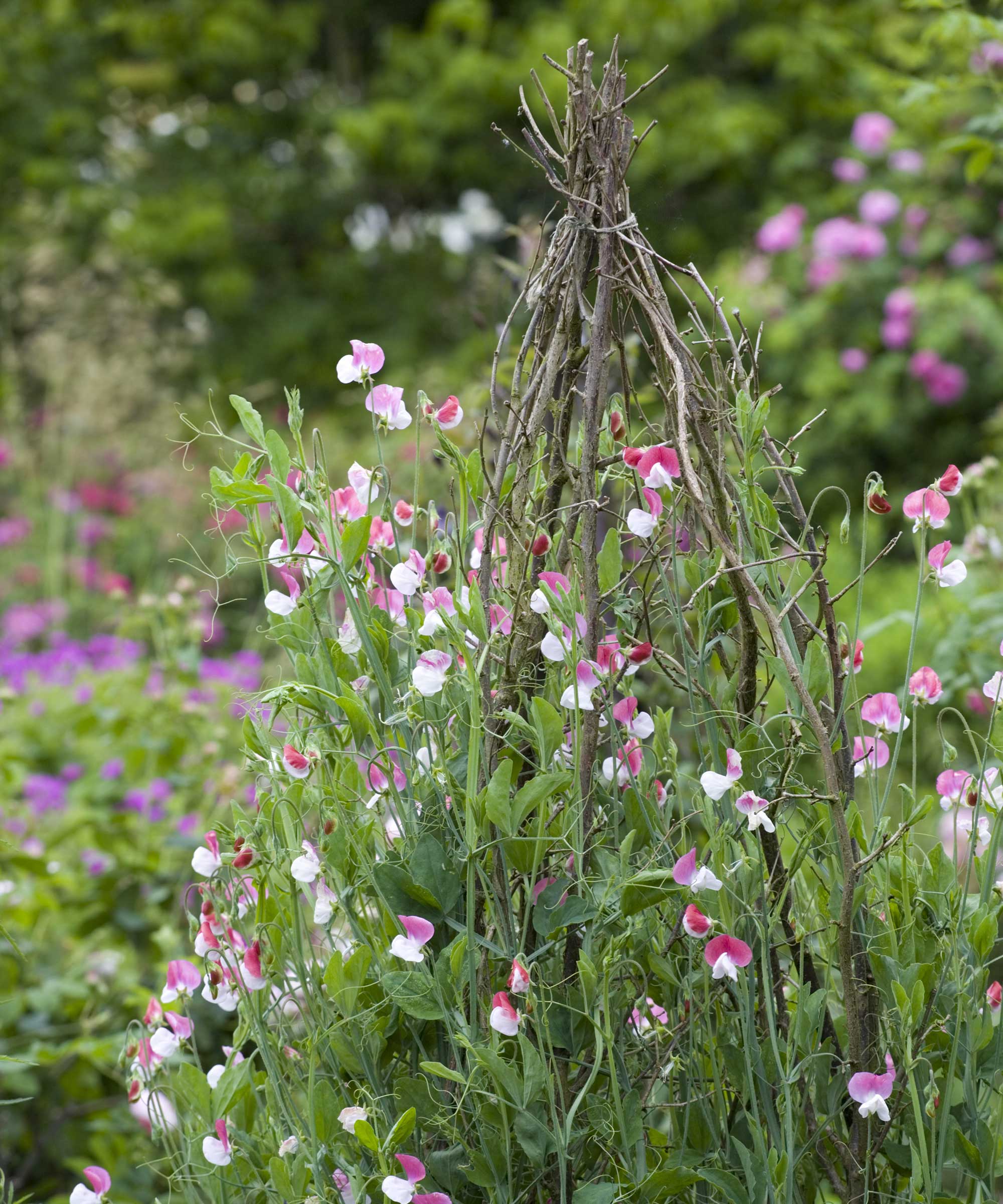
Alternatively, you can train sweet peas up your garden trellis, 'if the frame's holes are large enough to allow good airflow and plenty of light.' Hazel adds how they will need to face the sun – sweet peas are sun worshippers.
'You could also create a sweet pea "hedge" using canes or sticks and netting to create a fence,' Hazel continues. 'Use this around the edge of the vegetable patch or to divide areas of the vegetable patch, as long as it's in full sun.' As the sweet peas become bushier and begin to bloom, they will form a beautiful, flowery screen.
Feeling a little more adventurous? How about creating a sweet pea tunnel or garden arch? 'This makes a glorious entrance for a vegetable patch. Use tall hazel sticks at the sides, with slimmer, bendier willow sticks used to form the curving top of the arch,' says Hazel. 'Tie them together with sturdy twine.'
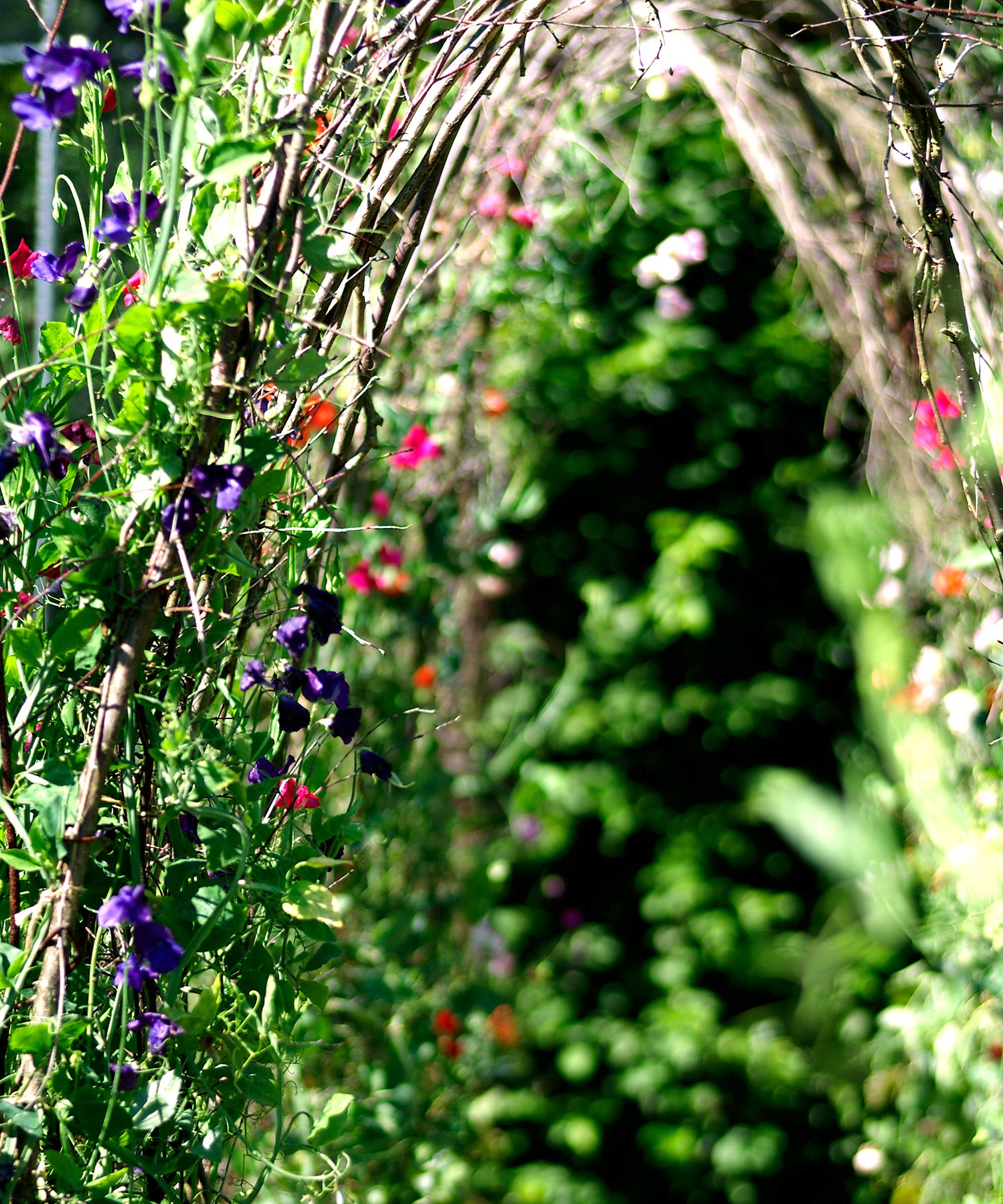
Can you grow sweet peas in pots?
You can grow sweet peas as part of your container gardening ideas, as long as the pot is very free-draining and is kept moist and fed, says Hazel.
'Compact forms, such as "Solway Lullaby" (navy-purple) and "Turquoise Lagoon" (mauve and blue), don't get as big as regular sweet peas, so they are quite happy in a generous container, into which you have inserted a small obelisk.
'Such supports (for example, willow wigwams) can be bought or you could make your own, using hazel sticks. Dwarf varieties (such as the two-tone "Pink Cupid") are so small that they don't require support and tumble attractively out of a hanging basket or pot.'

More top tips for growing sweet peas
- After sowing your seeds, stand the trays on a layer of gravel in the cold frame to deter slugs and snails.
- To keep hungry mice away, soak the seeds briefly in liquid paraffin as an effective deterrent.
- Slugs and snails will be attracted by sweet peas' tender young growth, so regularly spray seedlings with slug and snail repellent to keep them safe. There's more advice on how to get rid of slugs in the garden in our guide.
- Too much warmth and not enough light leads to spindly growth. Pop your root trainers in a cool, light place for stronger plants.
- Poor ventilation is a common mistake that leads to fungal problems. When the weather is warm enough, open the greenhouse and cold frame to circulate air around your seedlings. Remember to close them again at dusk so they don't get too cold.
- Sweet peas love water, says the team at Floret, and need consistent moisture to thrive. They suggest setting up soaker hoses as soon as you plant them to keep them looking lush. Our best garden sprinklers can come in handy here, too.
- The team at Floret also advises feeding your sweet peas weekly once they're planted out, using a diluted fish and seaweed emulsion.
- 'Sweet peas are poisonous for pets, so keep them away from young dogs that eat everything in sight,' says Hazel. There are more tips on the most poisonous plants for dogs and poisonous plants for cats in our guides.

What is the best way to pick sweet peas?
For the longest vase life, pick sweet peas when there are at least two unopened flowers at the tip of a stem, says the team at Floret. Add flower food to the water to extend vase life.
Don't be shy when it comes to picking your sweet peas to enjoy indoors. Doing so actually encourages the plants to bloom for longer, as it stops them from going to seed. Be sure to keep on top of dead-heading, and remove seed pods as soon as possible too, to help with this further, as says Sue Sanderson for Thompson & Morgan.
Looking for more gorgeous summer blooms that make lovely cut flowers? Learn how to grow dahlias or how to grow peonies, too.
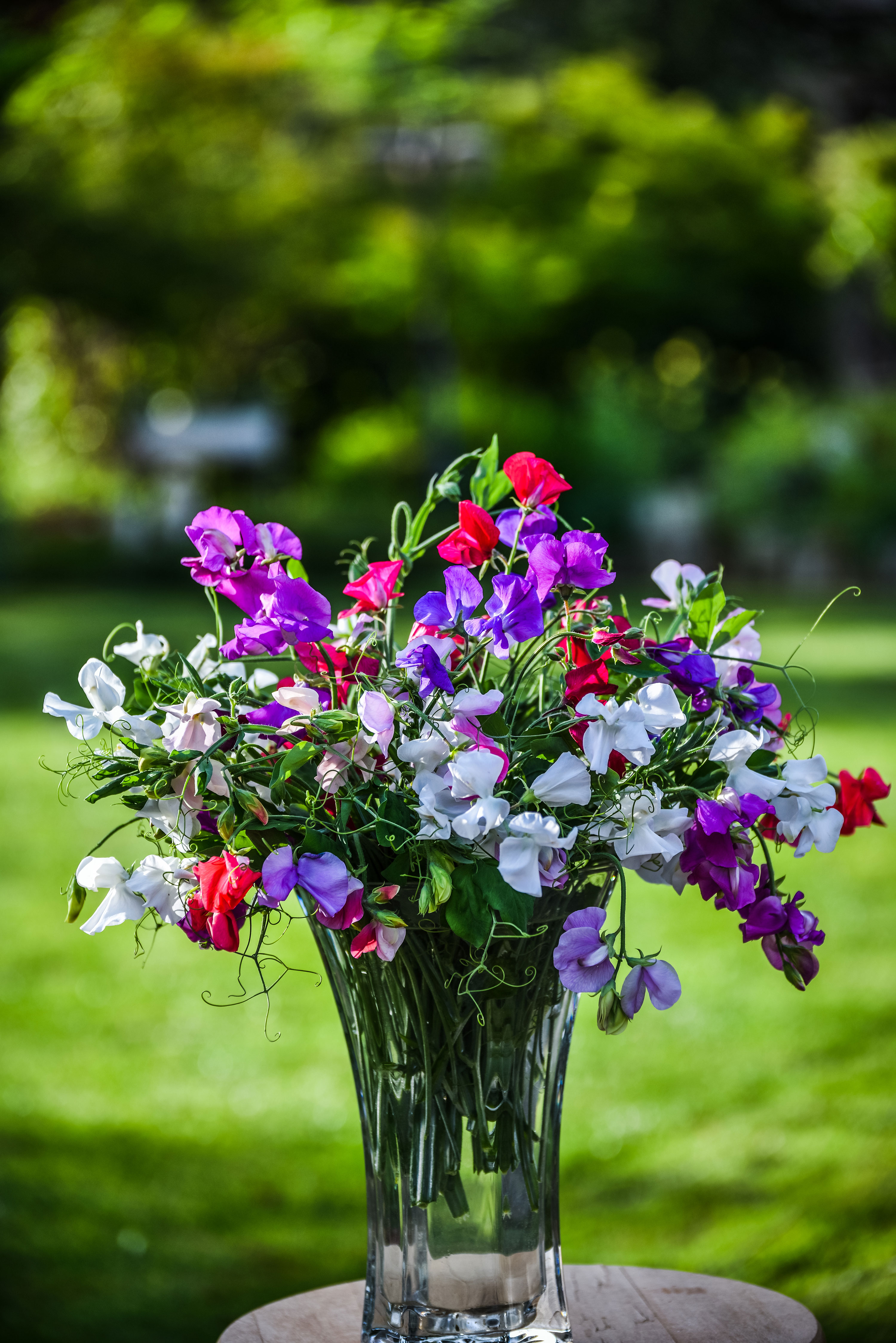
How do you collect sweet pea seeds for sowing?
If you're growing your own sweet peas this year, you might want to have a go at saving the seeds after they've flowered for next year's blooms. Here's how to do it:
- Collect the seedpods and bring them indoors.
- Remove the seeds from the pods and let them dry for a few days on a layer of newspaper.
- Once dry, store them in an airtight container in a cool place until you want to plant them.
You can find more tips on collecting seeds from flowers in our feature.
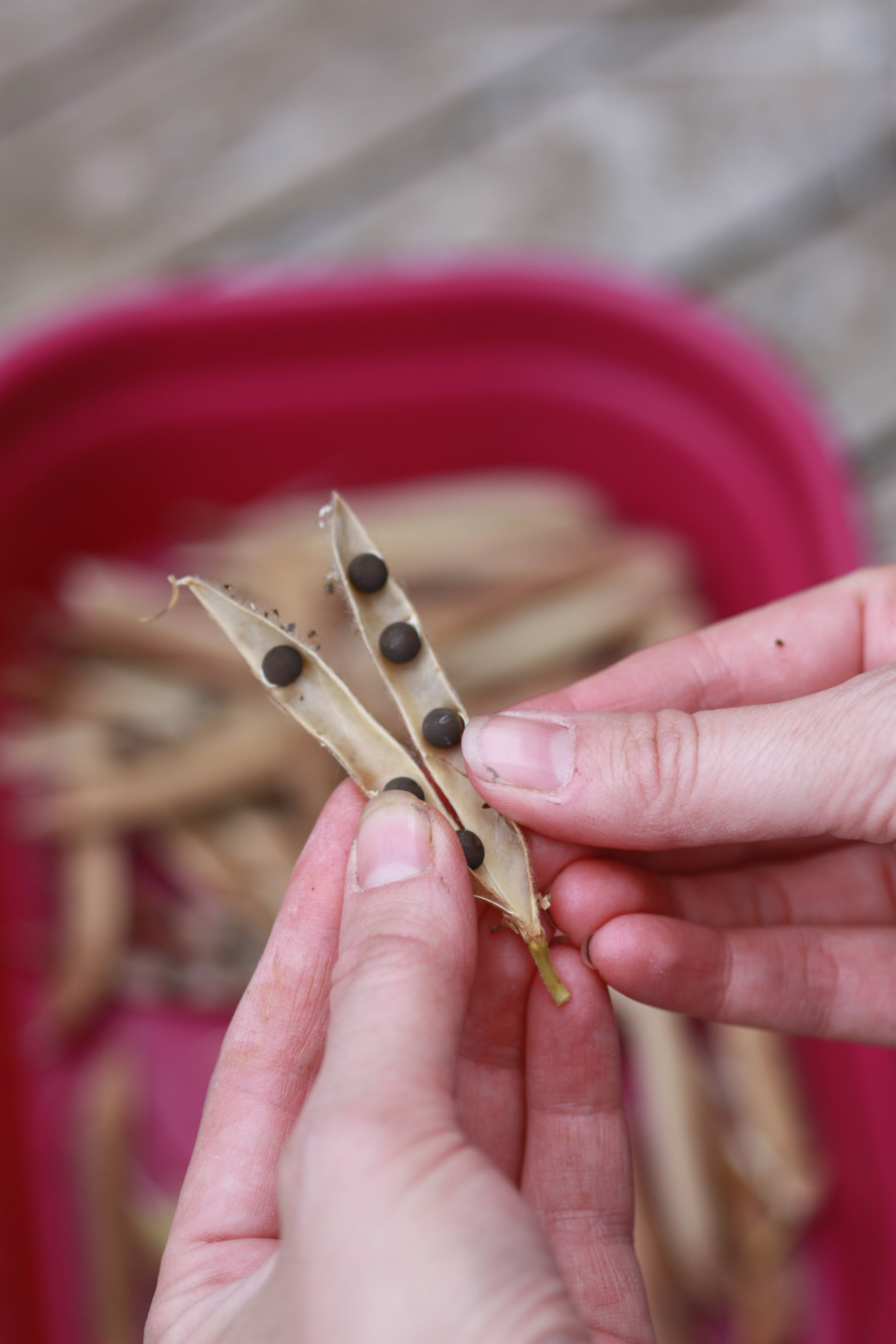
Where to buy sweet peas
Now you know how to grow sweet peas (and just how simple it is), you are bound to want some seeds of your own. Use our quicklinks below to start shopping.
Where to buy sweet peas in the US:
Where to buy sweet peas in the UK:

Lifestyle journalist Sarah Wilson has been writing about gardens since 2015. She's written for Gardeningetc.com, Livingetc, Homes & Gardens, Easy Gardens and Modern Gardens magazines. Having studied introductory garden and landscape design, she is currently putting the skills learned to good use in her own space where the dream is establishing a cutting garden.
